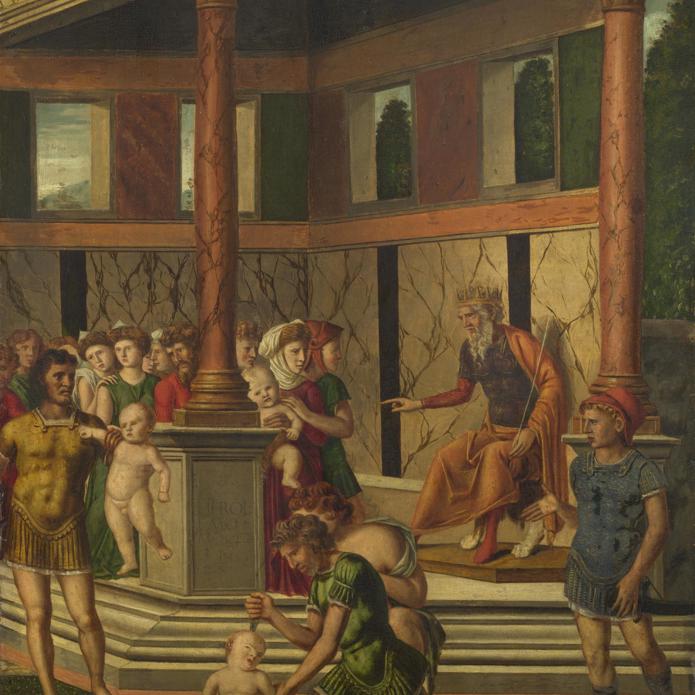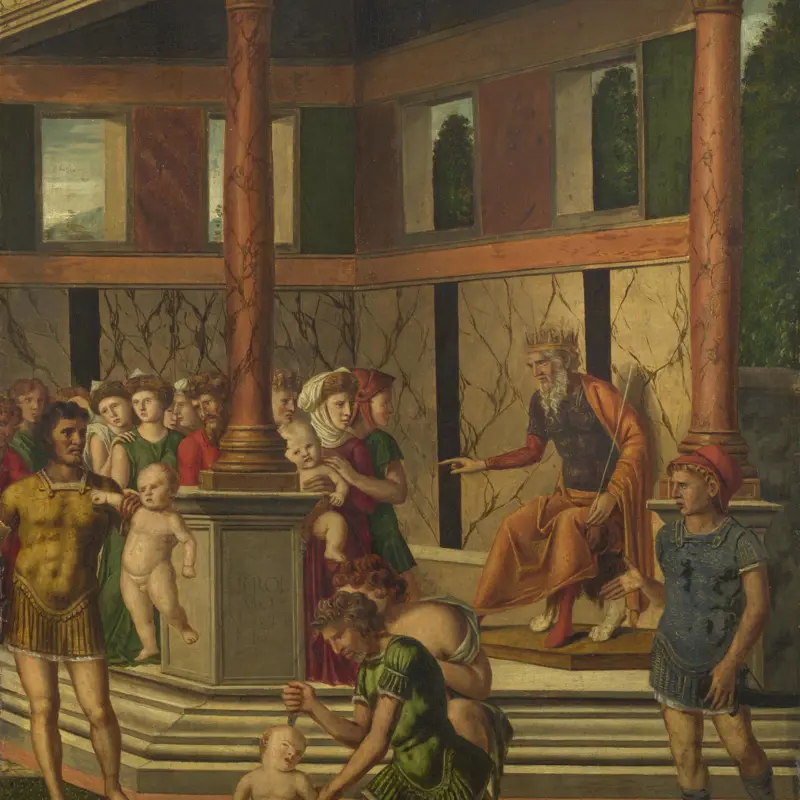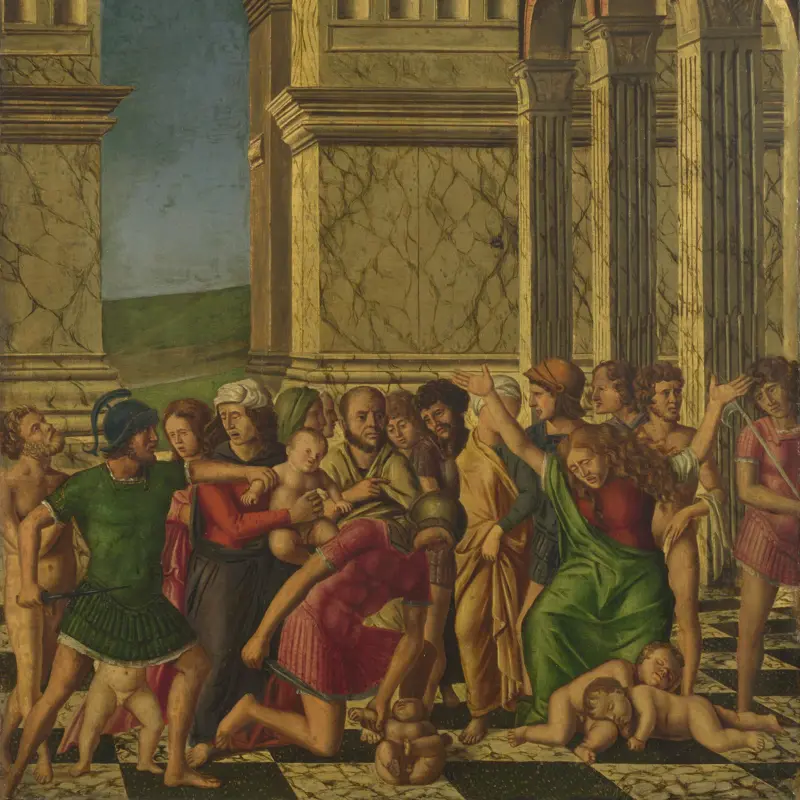Gerolamo Mocetto, 'The Massacre of the Innocents', about 1500-25
About the work
Overview
The scene shows the violent biblical episode in which King Herod orders a massacre of all children under the age of two in an attempt to kill the newborn Christ, believing him to be a threat to his rule. This panel was once joined with the other painting by Mocetto in our collection, forming the left-hand part of the composition.
A number of the poses here are copied directly from engravings by the painter and printmaker Mantegna, who, like Mocetto, was working in the Veneto. The kneeling soldier who is about to plunge his dagger into an infant comes from Mocetto’s engraving The killing of the Sow (British Museum, London). The figure in this engraving is naked and about to ritually sacrifice a pig, which he holds steady by the ear.
Key facts
Details
- Full title
- The Massacre of the Innocents
- Artist
- Gerolamo Mocetto
- Artist dates
- about 1458 - 1531
- Part of the series
- The Massacre of the Innocents
- Date made
- about 1500-25
- Medium and support
- oil, originally on wood, transferred to canvas
- Dimensions
- 67.9 × 44.5 cm
- Acquisition credit
- Bought, 1888
- Inventory number
- NG1240
- Location
- Not on display
- Collection
- Main Collection
- Previous owners
Provenance
Additional information
Text extracted from the ‘Provenance’ section of the catalogue entry in Martin Davies, ‘National Gallery Catalogues: The Earlier Italian Schools’, London 1986; for further information, see the full catalogue entry.
Bibliography
-
1951Davies, Martin, National Gallery Catalogues: The Earlier Italian Schools, London 1951
-
1986Davies, Martin, National Gallery Catalogues: The Earlier Italian Schools, revised edn, London 1986
-
2001
C. Baker and T. Henry, The National Gallery: Complete Illustrated Catalogue, London 2001
About this record
If you know more about this work or have spotted an error, please contact us. Please note that exhibition histories are listed from 2009 onwards. Bibliographies may not be complete; more comprehensive information is available in the National Gallery Library.
Images
About the series: The Massacre of the Innocents

Overview
When Herod, King of Judea, found out about the birth of Jesus, who was being called ‘the king of the Jews’, he ordered the killing of all children under the age of two, an event known as the ‘massacre of the innocents’ (Matthew 2: 16).
These two pictures once formed a continuous image, but it was cut up before entering the National Gallery’s collection. The picture showing Herod overseeing the slaughter was originally to the right. The architecture – for example, the balustrade – continues from one scene to the next but the alignment is not seamless, suggesting that both paintings were cut down at the inside edge.
Paintings by Mocetto are quite rare; he is better known as an engraver. He has placed his signature on the pedestal supporting the column of Herod’s palace: HEROL/EMO / MOCETO / P.[INXIT] (‘Gerolamo Mocetto painted this’).


